Attention GCI Patients — Effective October 6, 2025, the GCI Oak Lawn location will be closed. All patients of GCI Oak Lawn will be seen at our Chicago Ridge location at 10604 Southwest Highway, Suite 109, Chicago Ridge, IL 60415.
Cancer staging describes how far the cancer has advanced, including its location and whether it has spread to other parts of the body. This information is an important part of the treatment planning process for prostate cancer doctors.
Determining the Extent of Prostate Cancer
Prostate cancer has two types of staging: clinical staging and pathological staging. This is categorized as either clinical (cT) or pathological (pT).
Clinical staging is determined by the results of PSA testing, the Gleason score, and the findings from the Digital Rectal Exam (DRE).
Pathological staging is established based on information gathered from prostate tissue samples obtained after surgery or a biopsy.
TNM Staging for Prostate Cancer
The AJCC (American Joint Committee on Cancer) TNM system is the most commonly used staging system for prostate cancer. This system is based on three key pieces of information:
Tumor size (T): What is the extent of the primary tumor?
Lymph node involvement (N): Has the cancer spread to nearby lymph nodes?
Metastasis (M): Are other parts of the body affected by the cancer?
-
T Categories for Prostate Cancer
TX: The primary tumor cannot be measured.
T0: The primary tumor is not located.
T1, T2, T3, and T4: These categories refer to the size and extent of the primary tumor, with higher numbers indicating greater growth into surrounding tissues. There can be further subclassifications, such as T2a, T2b, etc.
-
N Categories for Prostate Cancer
NX: Cancer in the lymph nodes cannot be measured.
N0: No cancer found in nearby lymph nodes.
N1, N2, N3: Numbers indicate how many lymph nodes contain cancer, with higher numbers signifying a greater frequency of cancer in lymph nodes.
-
M Categories for Prostate Cancer
MX: Metastasis cannot be measured.
M0: The disease has not spread to other areas of the body.
M1: Cancer has spread to other areas of the body.
Once the T, N, and M values are determined, they are combined to establish the overall cancer stage. Additionally, your PSA levels at the time of diagnosis, along with the Grade Group (which is based on the tumor's Gleason score) are taken into account.
Learn more about the meaning and importance of your Gleason score.
The Stages of Prostate Cancer
Stage I Prostate Cancer
The prostate cancer cannot be felt during a digital rectal exam, and cannot be seen on a sonogram. It is often found during surgery for another non-cancerous reason, usually for a benign prostatic hyperplasia (BPH). Cancer is only in the prostate. The grade is G1, or the Gleason score is no higher than 4.
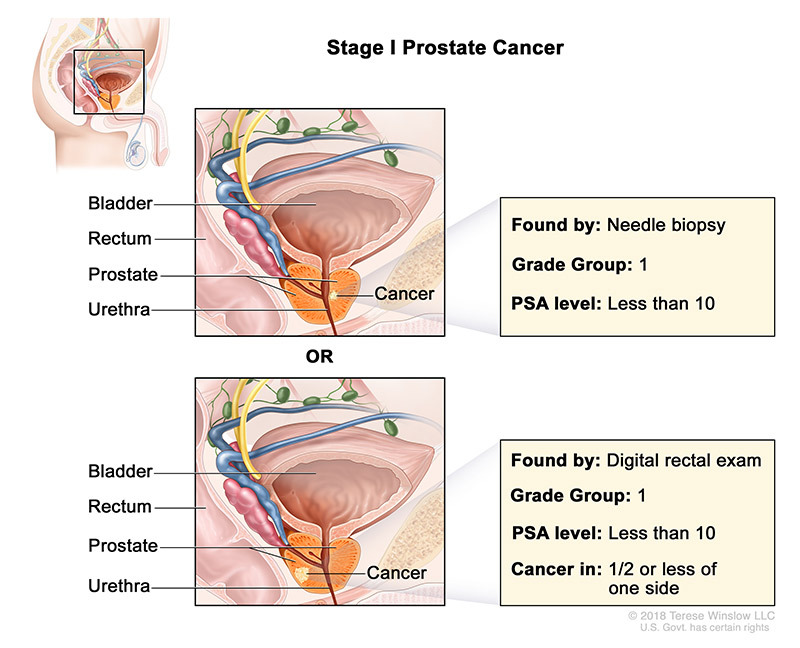
Stage II Prostate Cancer
The tumor is more advanced or has a higher grade than Stage I, but the tumor doesn’t extend beyond the prostate. It may be felt during a digital rectal exam, or it may be seen on a sonogram.
Stage IIA Prostate Cancer: The tumor cannot be felt and involves half of 1 side of the prostate or even less than that. PSA levels are medium, and the cancer cells are well differentiated. This stage also includes larger tumors found only in the prostate, as long as the cancer cells are still well differentiated.
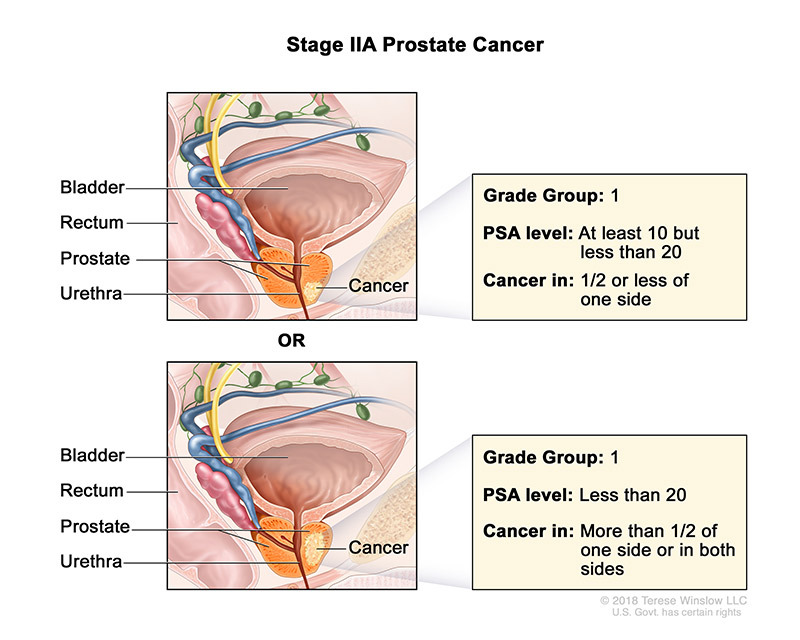
Stage IIB Prostate Cancer: The tumor is found only inside the prostate, and it may be large enough to be felt during DRE. The PSA level is medium. The cancer cells are moderately differentiated.
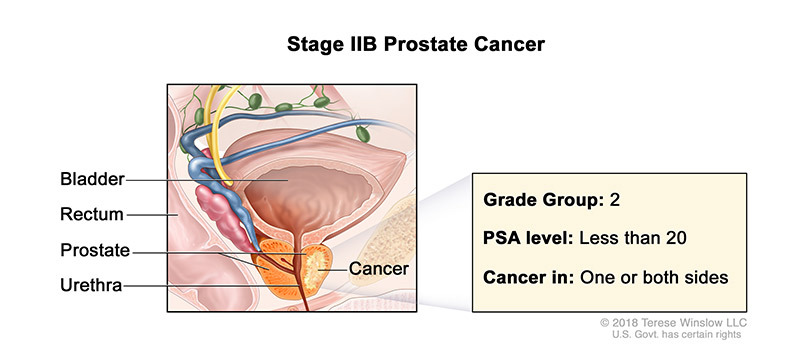
Stage IIC Prostate Cancer: The tumor is found only inside the prostate, and it may be large enough to be felt during DRE. The PSA level is medium. The cancer cells may be moderately or poorly differentiated.
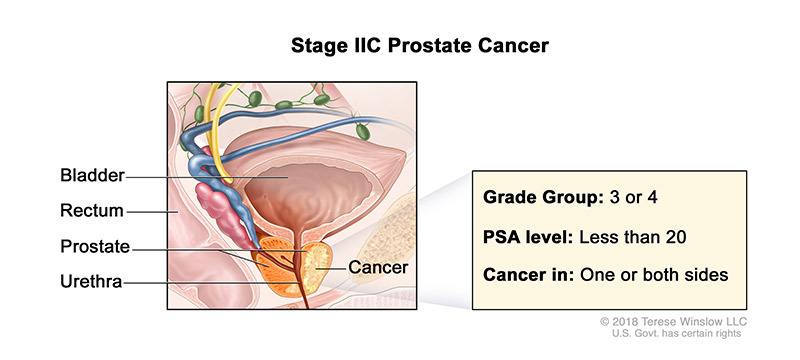
Stage III Prostate Cancer
The tumor has grown outside of the prostate and may have invaded the seminal vesicles, but has not spread to the lymph nodes.
Stage IIIA Prostate Cancer: The cancer has spread beyond the outer layer of the prostate into nearby tissues. It may also have spread to the seminal vesicles. The PSA level is high.
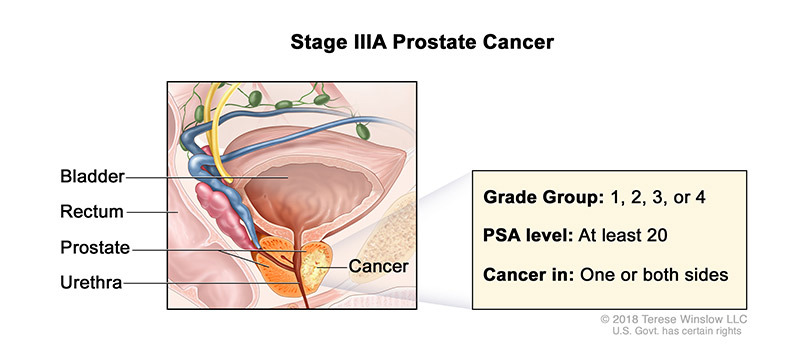
Stage IIIB Prostate Cancer: The tumor has grown outside of the prostate gland and may have invaded nearby structures, such as the bladder or rectum.
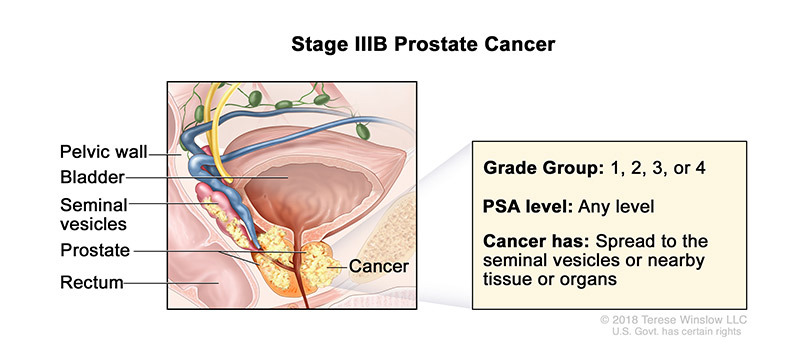
Stage IIIC Prostate Cancer: The cancer cells across the tumor are poorly differentiated, meaning they look very different from healthy cells.
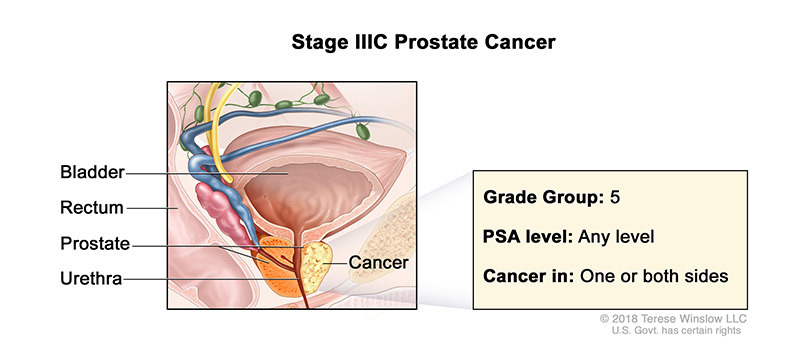
Stage IV Prostate Cancer
The tumor may have invaded the bladder, rectum, or nearby structures (beyond the seminal vesicles). It may have spread to the lymph nodes, bones, or to other parts of the body.
When prostate cancer spreads, it’s often found in nearby lymph nodes, and it may have also spread to other lymph nodes, bones, or organs. In such cases, the new tumor has the same kind of abnormal cells and the same name as the primary tumor. As a result, the disease is classified as "distant" or metastatic prostate cancer and will be treated as prostate cancer.
Stage IVA Prostate Cancer: The cancer has spread to the regional lymph nodes.
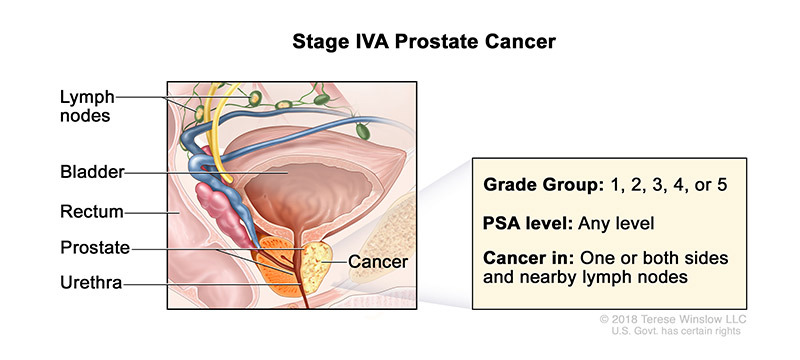
Stage IVB Prostate Cancer: The cancer has spread to distant lymph nodes, other parts of the body, or to the bones.
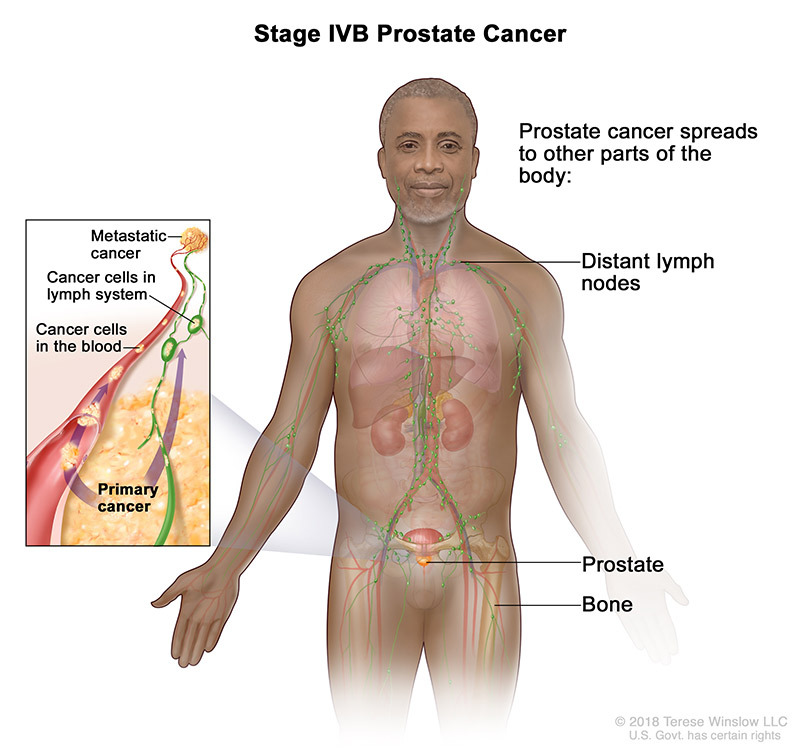
Recurrent Prostate Cancer
Prostate cancer that returns after treatment is called recurrent prostate cancer. In some cases, the cancer returns to the prostate area. In other cases, it can develop in other areas of the body. If your prostate cancer returns, your oncologist will schedule another round of tests to understand the extent of the recurrence. Testing will be similar to the ones done during the initial diagnosis of your prostate cancer.
How Risk Groups Influence Treatment
The stages of prostate cancer are essential for determining the seriousness of the disease. Many doctors also classify prostate cancer that hasn't yet spread into risk groups to determine the chances of localized cancer growing outside of the prostate. This helps in personalizing your treatment plan, including when treatment should begin and what approach will work best.
Prostate Cancer Care and Treatment at Affiliated Oncologist
If you have been recently diagnosed with prostate cancer, our oncologists in the South Chicago suburbs can help you determine the best next steps. Make an appointment at one of our cancer centers in Chicago Ridge, Mokena, Hazel Crest, Palos Heights, or Orland Park, IL.